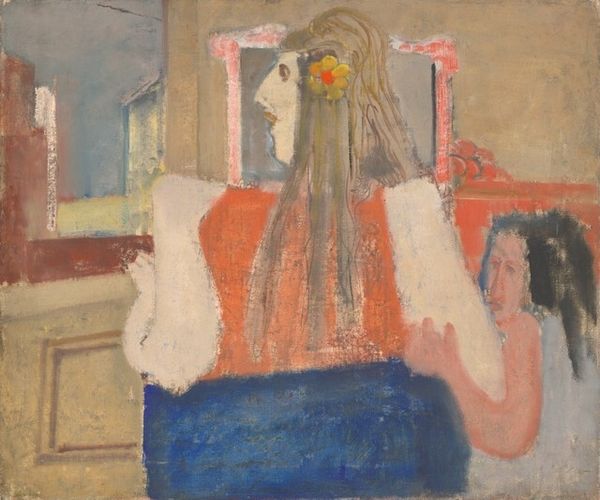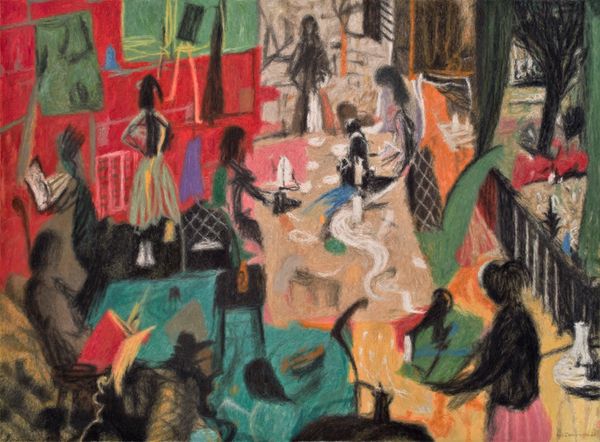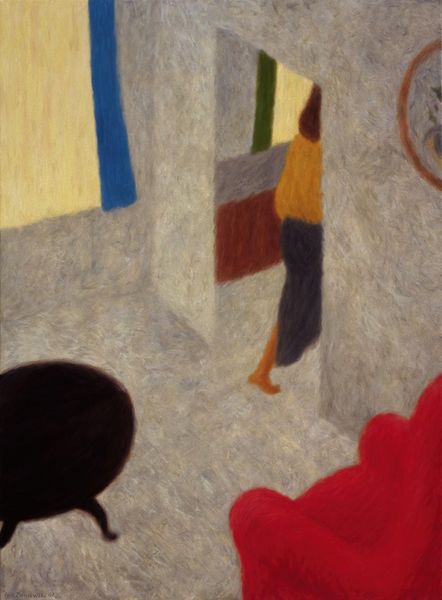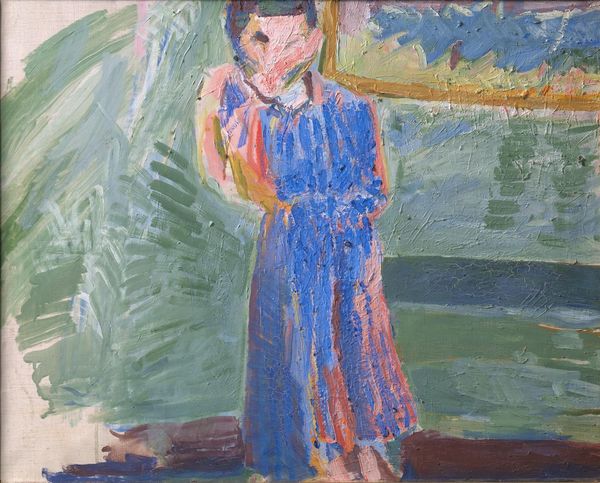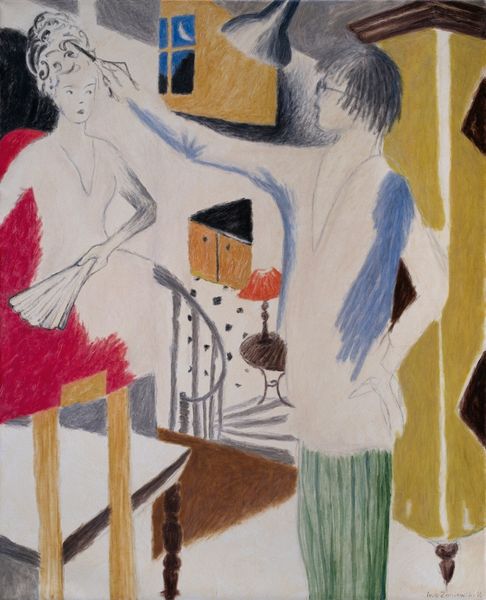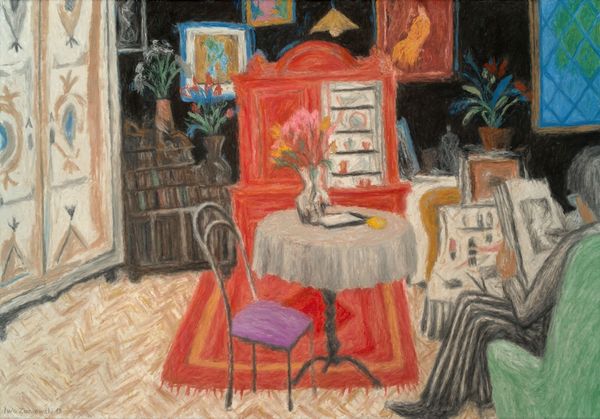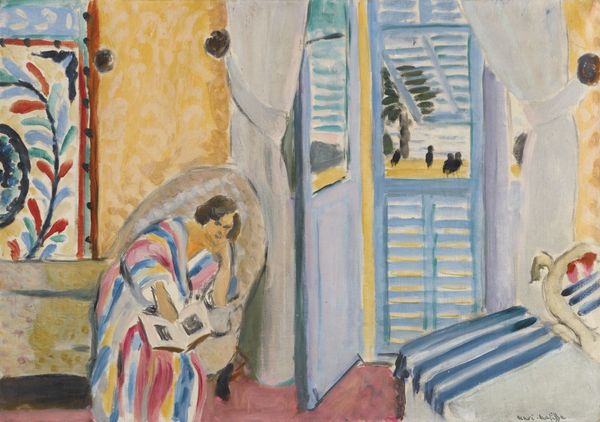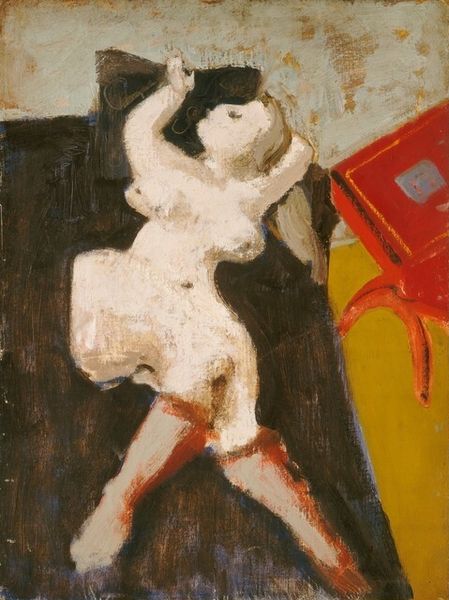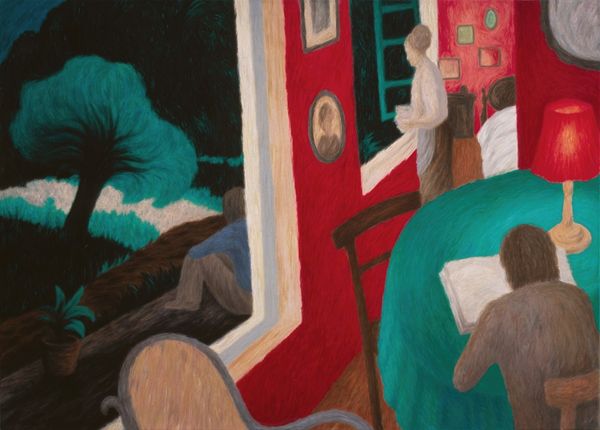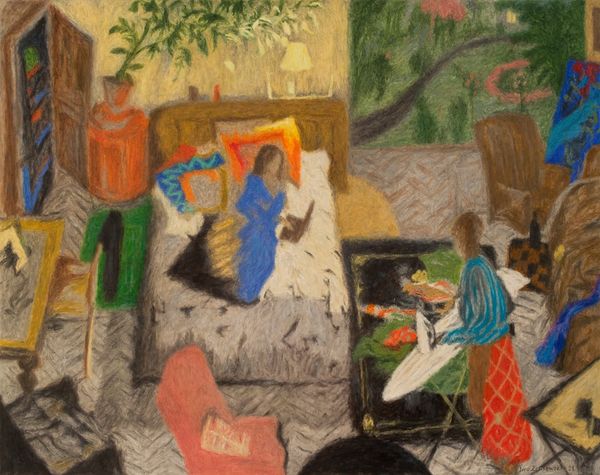
painting, oil-paint
#
painting
#
oil-paint
#
painted
#
figuration
#
oil painting
#
ashcan-school
#
cityscape
#
realism
Dimensions: overall: 91.5 x 55.8 cm (36 x 21 15/16 in.) framed: 101.3 x 65.7 x 11.1 cm (39 7/8 x 25 7/8 x 4 3/8 in.)
Copyright: National Gallery of Art: CC0 1.0
Curator: This is "Street Scene," an oil on canvas painted by Mark Rothko, circa 1936-1937. Rothko is, of course, much more known for his later color field paintings, but this is from an earlier period in his artistic journey. What strikes you about it? Editor: Honestly, it feels kind of haunting. The figures are so… indistinct. Like ghosts flitting through a shadowy city. There's something unsettling about their lack of detail. And that weird moon shape. It doesn't feel inviting. Curator: I see that. It's crucial to remember the historical context. Rothko painted this during the Depression era. The Ashcan School influence, focusing on urban realism, is apparent here. He’s showing us everyday life, but there's also a sense of alienation, of social fragmentation. Editor: The Ashcan School, right? Those gritty cityscapes. But this is almost dreamlike. The colors are muted, smudged. Like looking through a rain-streaked window. And is that a crescent moon…or a smirk up in the sky? Curator: The dreamlike quality, as you say, foreshadows his later exploration of subconscious emotions. Rothko was deeply concerned with expressing human emotions on a grand scale, connecting with primal feelings. Even here, he’s exploring themes of urban isolation, hinting at anxieties prevalent in that period. The figures are de-individualized. Consider that within the societal and political discourse. Editor: Yeah, no faces, like we are just a crowd. But all I want to do is reimagine a neon sign for that blank box in the alley wall—what business does that building hide? Maybe that's my "primal" feeling, a painter just has to decorate everything. But, it makes me think about how cities themselves can feel like lonely places even when they're crowded, full of anonymous people living their lives so close but so far apart. Curator: Precisely. The painting anticipates some key themes explored in 20th-century existentialism and the experience of urban life amidst massive socioeconomic inequalities, especially gender dynamics within it, where a sense of detachment became a defining characteristic. Editor: Makes you think about all that's been lost since then and how cities carry so many different meanings for us still. Anyway, this got deep! Time for coffee. Curator: Indeed, "Street Scene" reminds us that Rothko's journey was not just about abstract expressionism, but about a lifelong attempt to capture the essence of human experience in an ever-changing world.
Comments
No comments
Be the first to comment and join the conversation on the ultimate creative platform.
